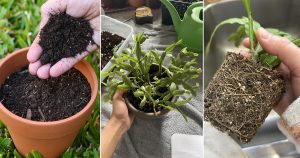Want to try different methods to raise ZZ? This guide will help you grow them without soil, keeping your plant love alive.
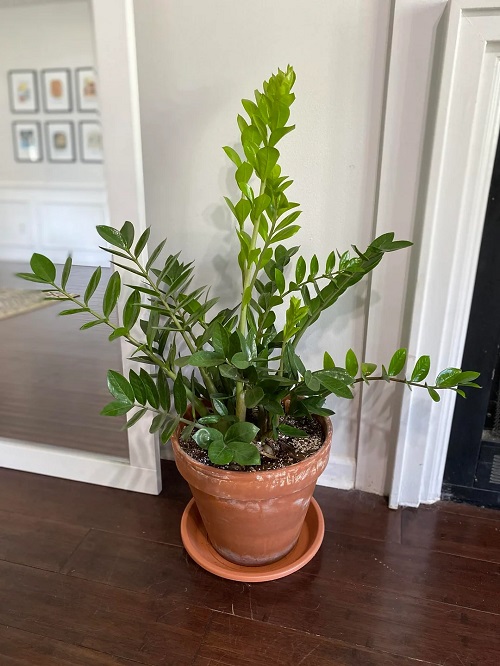
If you think growing a ZZ plant in soil is difficult, then you might be wrong. It’s not rocket science; just a few tips, and you’re good to go and see your Zamioculcas flourish over time. They are low-maintenance plants and very adaptable to various growing conditions. Read along to know everything about their growing requirements.
If not Soil, Then What?
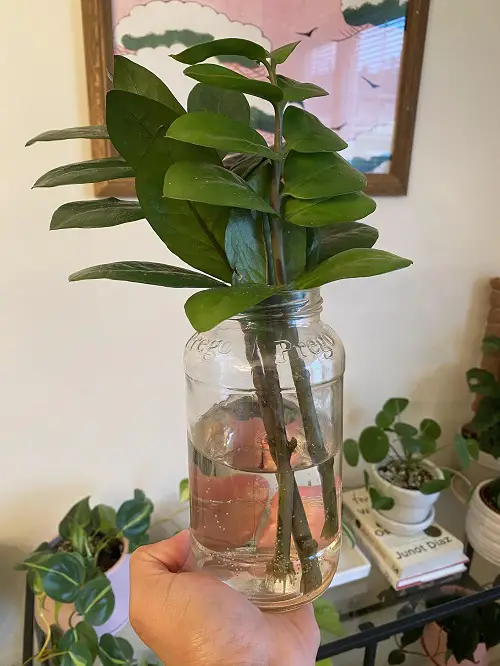
Water is always the best option for growing plants when not in soil. However, growing ZZ plants in water is a relatively new idea and is great for plant experimenters. It is an excellent method for propagation and short-term growth for these semi-evergreen plants.
Also, water is a potent regulator of plant development and induces root branching faster through hydro patterning. Roots find it easier to penetrate water than soil; therefore, most plants are initially propagated in water.
Plants in water are less susceptible to pests or diseases. This dirt-free method helps reduce allergens in your home.
How to Grow a ZZ plant in Water?
1. Choose disease-free cuttings
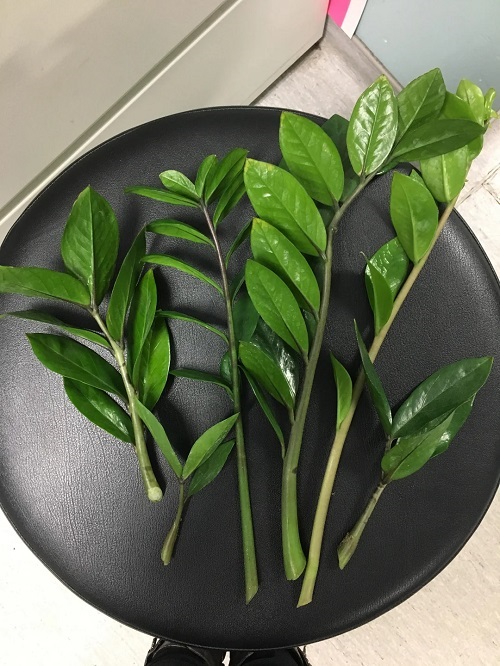
Be the best casting director to cast your only hero! Select a 4-5 inch long stem cutting with a few leaves and remove 2-3 pairs of leaves from the base. You can also use a minor division from the parent plant.
Cut them with sterilized pruning shears or scissors to avoid infecting the plant. Check if the base of the cutting has at least one node to be submerged in water.
2. Selecting the Right Container
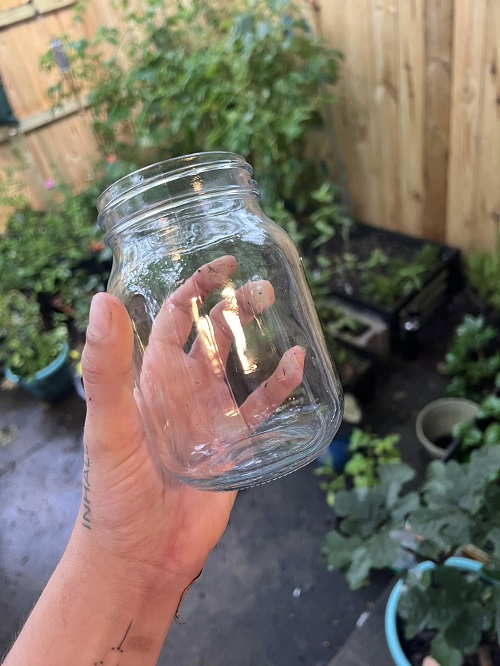
You can use a medium-sized glass jar or vase, depending on your cutting’s size. Fill it about 3/4th with water so you can easily see root growth. The rhizomes should stay above the water—only the roots need a dip.
Colored or tinted vases reduce light exposure, slowing algae growth and adding a decorative touch.
Also, choose a jar with a wide mouth for air circulation—stagnant water can suffocate the roots.
3. Provide proper Light and Temperature
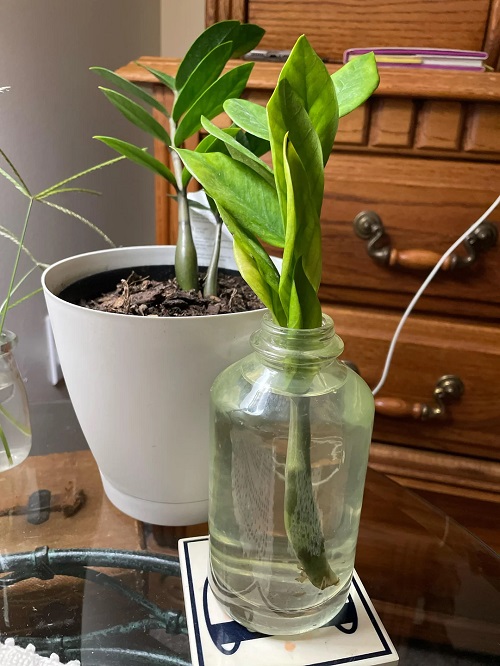
Keep the container in a dry place that receives bright, indirect light and has a temperature range of 65-80°F. ZZ plants thrive in moderate humidity. Avoid placing them near air conditioners or heaters, as sudden temperature changes can stress the roots.
4. Change water Frequently
It’s better to use distilled or filtered water to avoid chlorine and mineral buildup. Change the water every 5-7 days to prevent any bacterial growth, thus keeping it well-oxygenated. Also, clean the container with dish soap and warm water to ensure everything is clean.
If you notice cloudy or foul-smelling water, don’t wait for the week—change it immediately. It’s a sign of bacterial growth.
5. Add-on Fertilizer
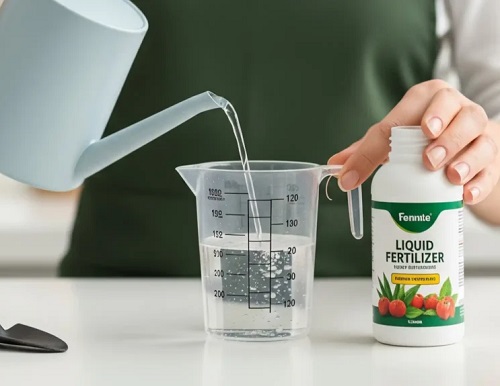
Feed your ZZ once a month with a diluted liquid fertilizer. A balanced hydroponic fertilizer works best. Stick to half-strength—too much can burn delicate roots.
6. Transferring the plant
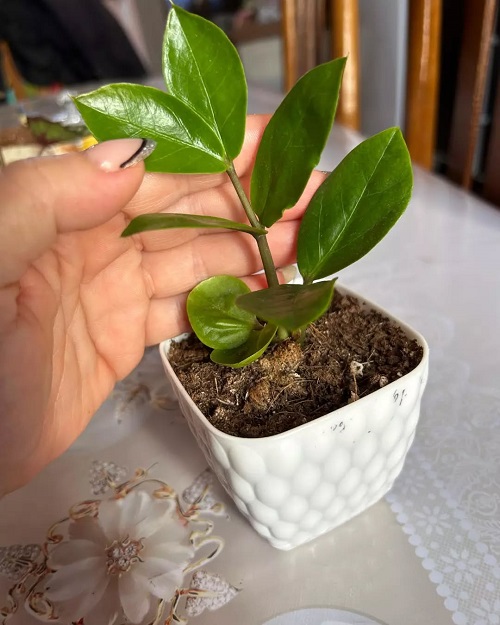
If you want to grow a ZZ plant in water or want to relocate it, that’s your call! If you can keep checking and changing the water, then the plant will be great. But if you forget, they might be in trouble.
If you can’t handle the hassle of changing water, replant them in a succulent mix soil. Before transferring them to soil, see if the plant has shot a few inches of root. Instead of changing water weekly, now you need to water them when the soil turns dry.
Possible Complications
1. The Fragile nature
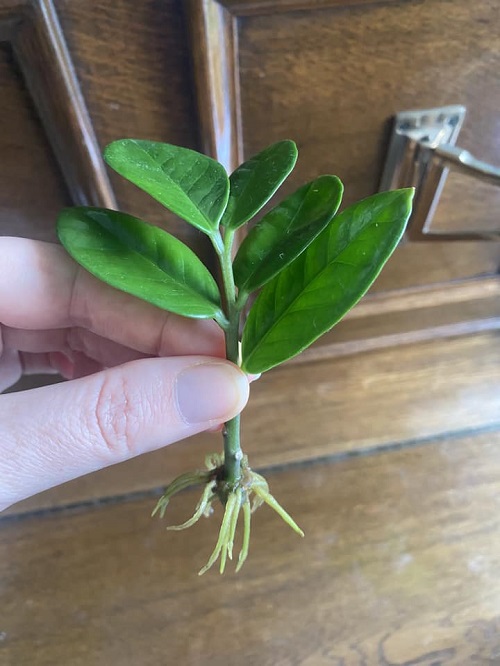
Roots develop at a faster pace in water, but they become more fragile compared to those grown in soil. The roots become thinner and delicate, so transfer them to soil when you see this sign. If you attempt it later, you will have to face difficulty.
2. Root Rot
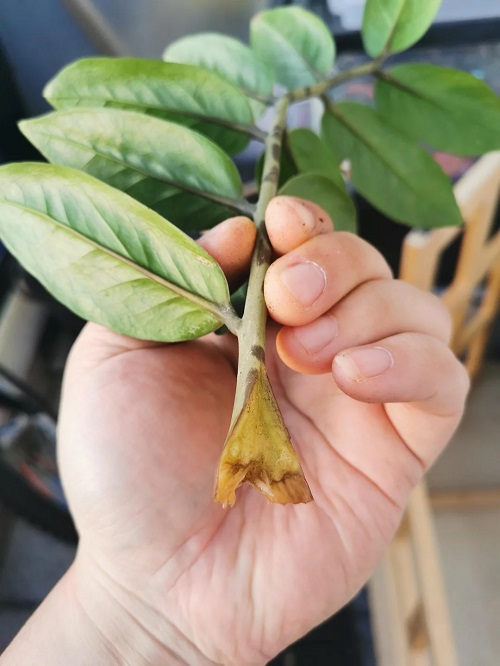
Unchanged water can invite bacteria and pests, leading to root rot. Adding a pinch of salt, a copper coin, or even a small piece of activated charcoal keeps the water clear and bacteria-free.
3. Too much Light
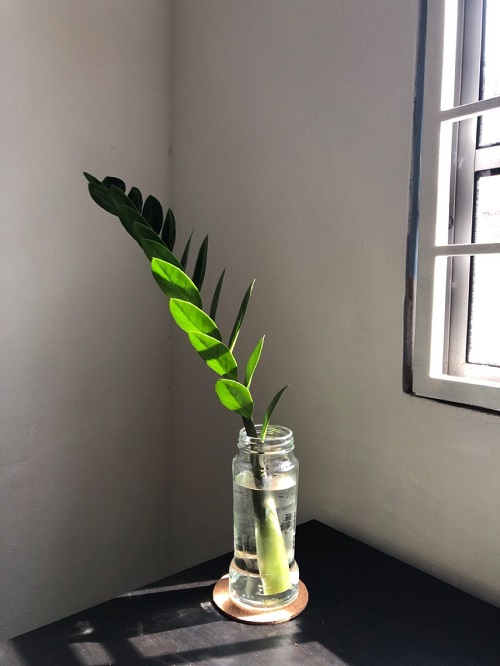
If you keep your container in direct sunlight, algae will proliferate and reduce the oxygen in the water, harming the roots. To prevent this, use an opaque or dark-colored container instead of a transparent one.
Alternatively, you can wrap the base of a clear glass vase with jute or paper to block light while keeping the top decorative.
4. Slow Growth
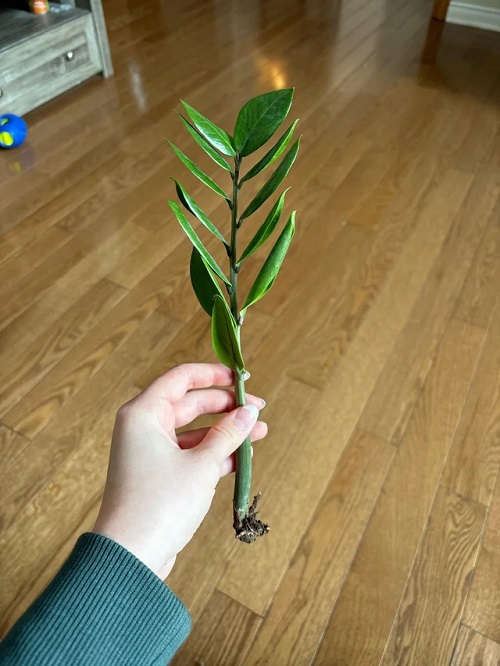
Over time, if your plant exhibits stunted growth, characterized by smaller leaves and thinner stems, it indicates that the water has lost its essential nutrients. The quick solution is to use store-bought 10:10:10 NPK fertilizer and dilute it accordingly for a liquid medium.
Remember, ZZ plants are naturally slow growers — so don’t panic if you don’t see new shoots often. Patience is key here.
Gardening offers opportunities to experiment with each plant uniquely, and this time it is the ZZ plant. Let us know in the comments about your ZZ plant in water.

